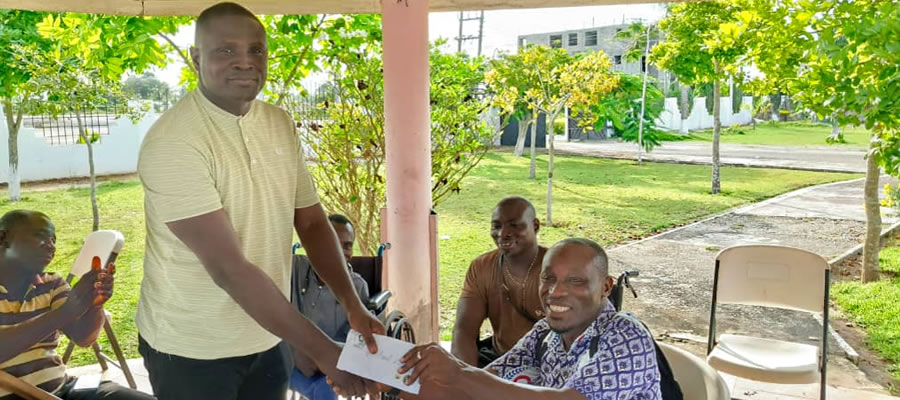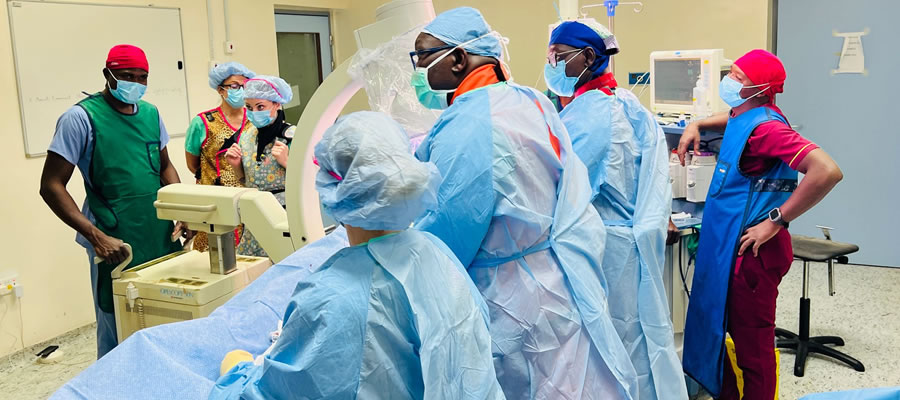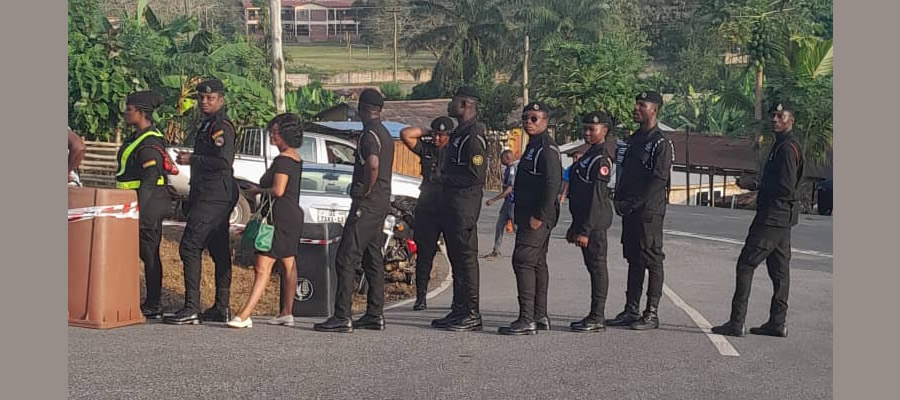

Summary Of Key Development Problems
Planning being basically a problem solving activity cannot be undertaken without appreciation of the prevailing development problems and priorities of the target population.
Thus the underlisted are summary of development problems identified:
• Poor Road Condition
• Poor Social Infrastructural base (Education & Health)
• Inadequate Land and Farming Inputs
• Low Production Level
• Inadequate Potable Water Coverage
• Poor Environmental Sanitation
• Low Electricity Coverage
• Poor Housing Condition
• Inadequate Office and Residential Accommodation
• High Illiteracy Rate
• High HIV/AIDS prevalence Rate
• High Rate of Chieftaincy disputes
• Inadequate Credit Facilities
• Inadequate Logistics for Monitoring of Projects and Programmes
• Under-developed Tourism Potentials
• High Incidence of Lawlessness
• Inadequate Knowledge on socio-economic importance of Oil and Gas Issues
• Low availability of Credit Facility
• Poor Internal Revenue Generation
Contact Us Ellembele District Assembly P O Box 34 Nkroful, Western Region Ghana W / Africa Tel No: (+233-272) 291656
Development Goal and Objectives
Development Focus
The Development Focus of the Ellembelle District Assembly based on analysis of the community aspirations, departmental plans, and NGO’s and development partners’ visions is to ensure that all the inhabitants of the District have the following:
1) Bridging development gap between well endowed communities and deprived ones.
2) Security from crime and other social unrest
3) Access to basic social services such as Health, Education, Potable water and clean environment.
4) Empowerment of local people in environmental sustainability
5) Adequate incentives to improve production
District development goal
Based upon the problems, needs, potentials, opportunities, constraints and priorities identified, the overall Goal of the Ellembelle District in line with the thematic areas of the MTDPF 2010-2013 and the National Goal is: To co-ordinate social services and environmental sustainability, improve security and develop accessibility to production areas and strengthen local institution for equitable growth and sustainable development.
Formulation of objectives and Strategies
The District believes the if the living conditions of the people, especially the rural people have access to basic social amenities, improved living standard and are involved in decision processes both local and national development will be achieved.
Monitoring And Evaluation
The monitoring and Evaluation will be done by the District Assembly through the District Planning and Coordinating Unit – DPCU and Sectoral Departments as indicated in the Annual Action Plan.Unforeseen changes in the Socio-Economic and Government Policies will affect the Plan. As a result there is the need for continuous monitoring and evaluation to enable the necessary adjustment and revision to be done.
Monitoring Report
Monitoring starts with the implementation of the projects. It is aimed at making sure that the Project progresses according to laid down procedures, Bill of Quantities, and scheduled as well as maintaining high quality standards.
The District Monitoring Team will be responsible for the overall supervision of the Programmes and Projects in the Annual Plan.
A monitoring record will be kept during the implementation, which will form the basis of writing monthly monitoring report to the District Chief Executive and also to correct mistakes.
Monitoring Framework
The Monitoring Framework outlines the mechanisms and indicators for the monitoring of the development programmes and projects and this is shown in the table below:
public hearing report
For effective plans implementation and to ensure ownership and sustainability, public hearings were organized in all the Seven Area Councils of the District to solicit inputs of all the stakeholders in the preparations of the plan. Communities under each Area Council were categorized under Sixteen (16) zones to solicit for their needs and aspirations.
Attached is the summary of details of the First (1) public hearing held for the stakeholders (Public. List of participants present at the forum is presented in Annex 1.
1a 1st Public Hearing of EDA involving all stakeholders at all the Seven Area Councils.
Name of Area Councils:Kikam, Esiama, Nkroful, Asasetre, Atuabo, Awiebo and Aiyinasi.
Region: Western
Venue: Asanta Community Centre & Kikam Palace – Kikam, Esiama Palace & Kumgbunli Community Center – Esiama, Nkroful Palace & Salman Community – Nkroful, Atuabo Palace & Kikam Palace – Atuabo, Asasetre Palace & Tandan Palace – Asasetre, Baseke Palace & A.B.Bokazo – Awiebo and Aiyinasi Palace & Nyamebekyere - Aiyinasi
Date: Kikam – May 29th , Esiama – May 27th , Nkroful – May 30th , Asasetre -June 10th , Atuabo – June 11th, Awiebo – June 12th and Aiyinasi June 13th , 2010.
Medium of Invitation: Letters
Number of Participants: 140 (20 participants from each Area Council)
Gender: M (93) F (47), representing 66.4% for Males and 33.6% for Female
Language Used at Hearing: Nzema and Twi.
The District Planning Officer, Mr. Derrick Obeng Dapaah took the participants through the data collection phase, analysis of the current District situation (District Profile), summary of needs and aspiration of communities.
The key issues that came up across the various Area Councils were that, there have been instances where priorities and aspirations of communities are collated and its implementation becomes a mirage. Stakeholder entreated the Planning Authority of the District to adhere to the community needs to ensure equitable and sustainable development.
The District Planning Officer, however stated that the essence of the first public hearing is to authenticate whatever data that had come from the respective communities, and for this reason they have been invited to participate in the session so that each of them can make an input into the preparation of the DMTDP that represent their respective electoral areas.
Strategic Environmental Assessment (SEA) of MTDP
Strategic Environmental Assessment (SEA) is increasingly emerging as the major tool for developing and analyzing strategic actions (policies, plans and programmes-PPP) to ensure that they adequately mainstream the concept of sustainability and thereby respond to the need for balancing socio-economic development with the requirement for conserving and enhancing the natural capital on which all lives depend.
The need to give greater emphasis to sustainable forms of development in District Medium-Term Development Plan, under the Ghana Shared Growth and Development Agenda (GSGDA 1) 2010-2013 is being tackled using Strategic Environmental Assessment (SEA) tool. This tool is used to assess the sustainability of existing or new Policies, Plans and Programmes (PPP).
6.3.1 The Aims of SEA
The main aim of SEA is to:
Incorporate Environmental/Sustainability issues in strategic decision-making.
The secondary aims of SEA are to:
• improve the strategic action by making it clearer, more internally consistent etc.
• involve the public or its representatives in the decision-making process; and
• educate decision-makers about the environmental impacts of their decisions.
• Predicting the environmental impacts of a strategic action and
Application of SEA Tools.
The Policies, Plans, Programmes were subjected SEAs tool comprising of Sustainability tool, Internal Consistency and Compound Matrix. The underlisted are some of the analysis sampled under the Thematic Areas:
1. Reshape roads in deplorable state
Activity is fairly favorable in all criteria except pollution to the air and water bodies, however interventions are needed.
2. Organize Communal action to clear overgrowth de-silt drain
Activity is favorable especially on natural resource and socio-cultural issues
3. Lobby Bank to support the formation of Co-operative
Activity is fairly favorable in both socio-cultural and economic issue, negative effect on institutional issue, thus need mitigation measures
4. Train SMEs in acquisition of loans from Micro-finance Schemes
Activity is favorable on effect on socio-cultural condition, negative effect on institutional issues, thus mitigation measures needed.
5. Institute Local Tourism Project Steering Committee
Activity is sustainable in both Natural Resource and effect on socio-cultural condition
6. Lobby CEMACs to curtail unlawful fishing and coastal practices
The activity is sustainable especially on natural resource
7. Introduce Corn-dough and Oil producers to improve technology
Activity is sustainable with negative, impact on energy and pollution, hence calls for mitigation measures
8. Validate data on existing facilities and embark on expansion
The activity is sustainable especially on natural resource and social issues.
8. Conduct survey and education on the importance of energy saving appliance.
Activity is fairly favorable especially on natural resource and socio-cultural and economic issues, but negative effect on institutional issues, thus need mitigation measures.
Date Created : 11/20/2017 3:54:03 AM









 facebook
facebook
 twitter
twitter
 Youtube
Youtube
 +233 593 831 280
+233 593 831 280 0800 430 430
0800 430 430 GPS: GE-231-4383
GPS: GE-231-4383 info@ghanadistricts.com
info@ghanadistricts.com Box GP1044, Accra, Ghana
Box GP1044, Accra, Ghana